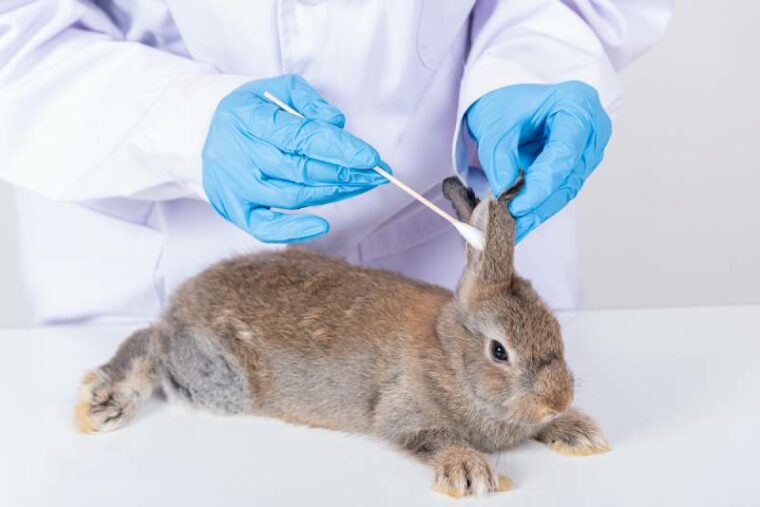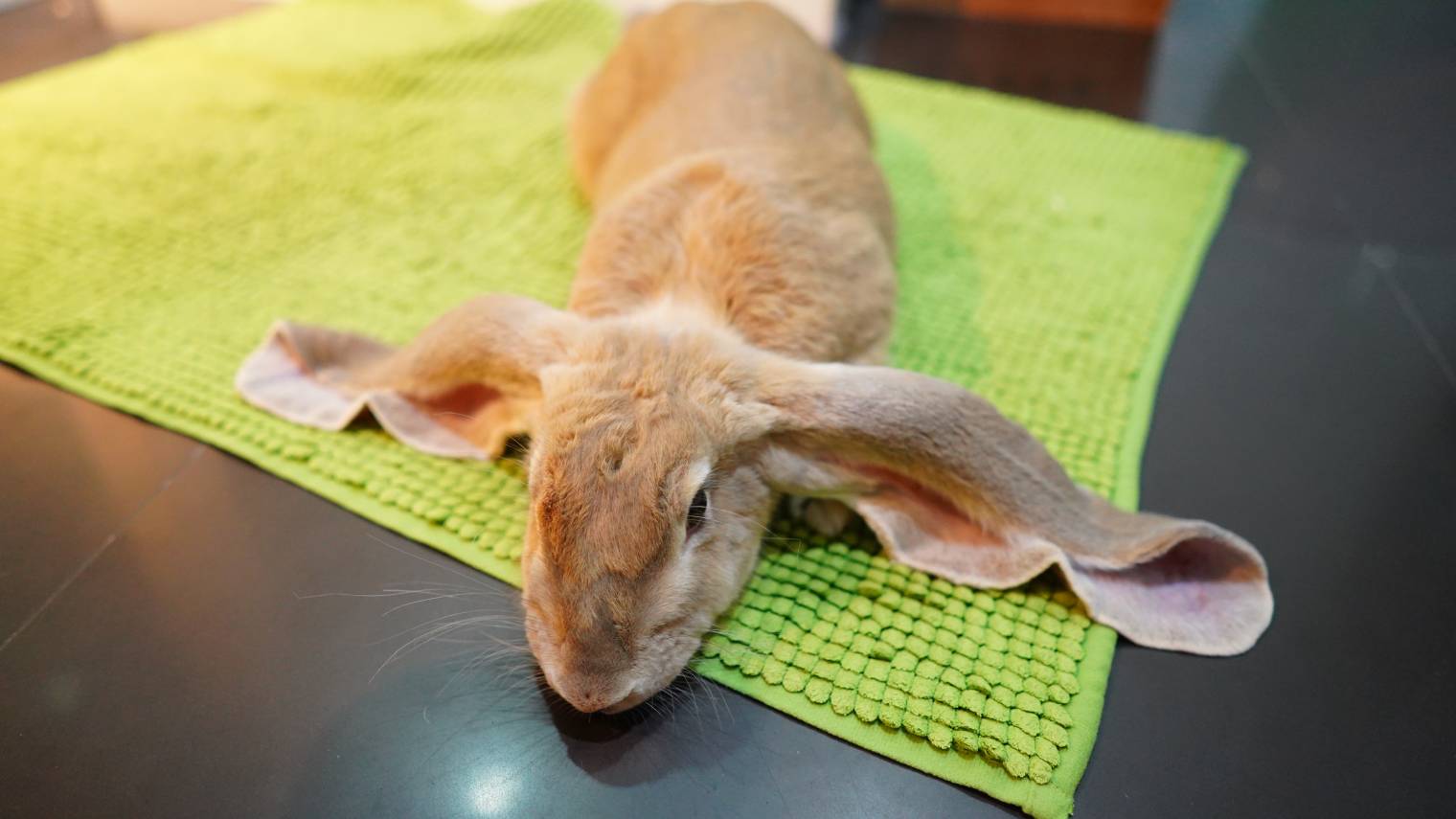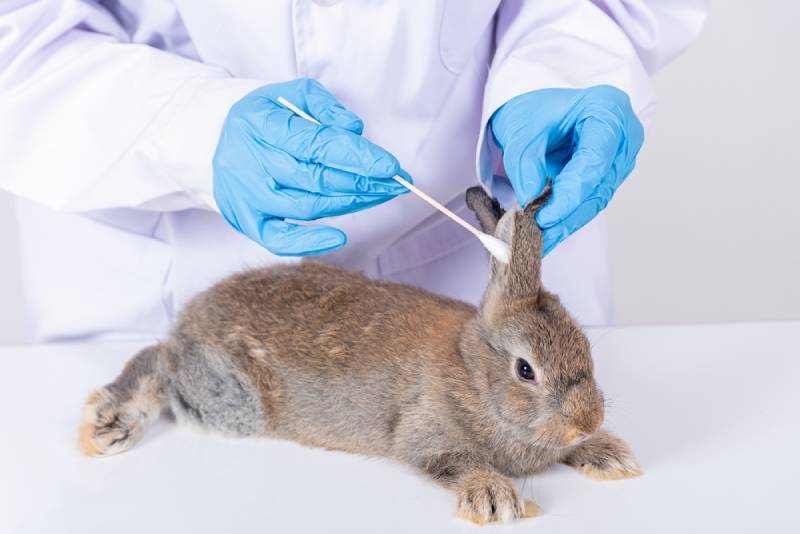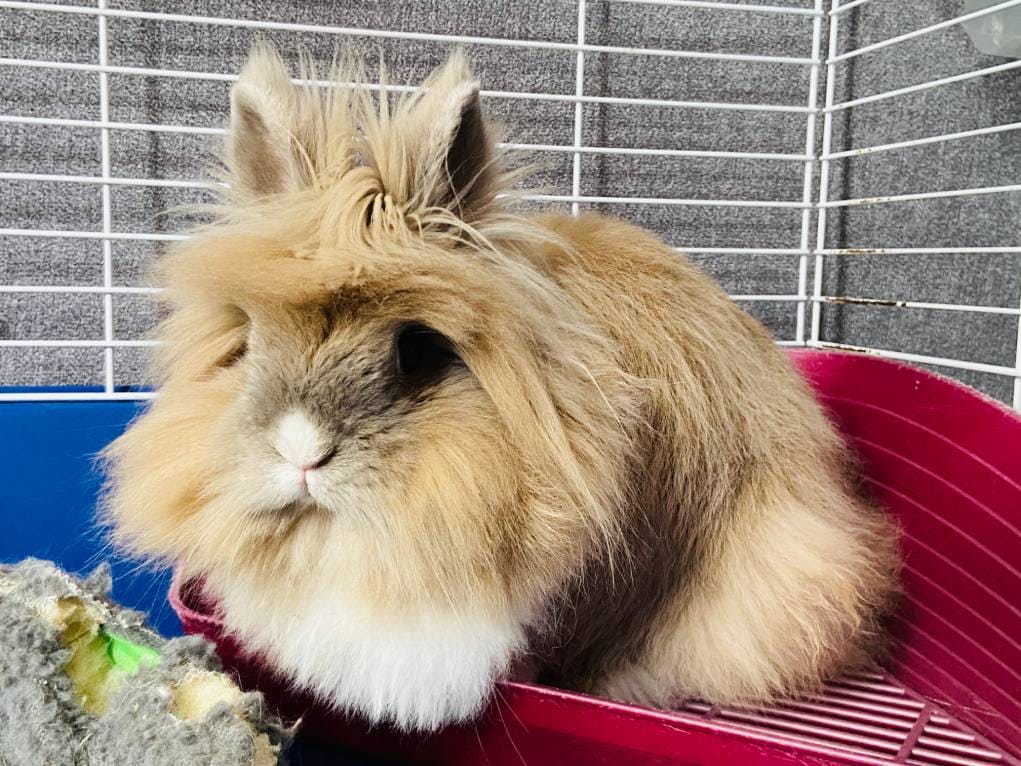
Rabbits’ ears are sensitive, and they create ear wax for protection.1 Though rabbits will groom their own ears, it may not be enough to prevent excessive wax buildup and complications like inflammation and infection.2
Without proper cleaning, which may be difficult for older or disabled rabbits and rabbits with excessive wax production, the wax can put pressure on the ear canal and creates an environment ideal for infections and parasites.
Fortunately, cleaning your rabbit’s ears once a month—or more, if needed—can help your rabbit maintain healthy ears. Here’s how to clean your rabbit’s ears safely and properly.
Preparation
A rabbit’s ears don’t require any special cleaning solution—all you need is water and some supplies.
Avoid using home remedies for your rabbit’s ears, such as olive oil or essential oils. If your rabbit has excessive wax buildup that’s more than you can manage, speak with your vet about recommended cleaning solutions or treatment options.
The 3 Steps to Clean a Rabbit’s Ears:
1. Prepare Your Rabbit
Rabbit’s ears are sensitive and delicate. It’s vital that you use caution and clean your rabbit’s ears gently and safely.
Ear cleaning may be uncomfortable or scary for your rabbit, so it’s important to build up to a full cleaning. This can take time to get your rabbit used to the process.
Work with your rabbit on being held and having its ears touched and stroked. Over time, this will become routine and make cleaning easier. You should also get your rabbit used to being held or restrained, which will make the cleaning process safer and less stressful for both of you.

2. Gently Restrain Your Rabbit
Rabbits are prey animals and can be flighty when scared. Their first instinct is to run away from threats, which may include you for ear cleaning.
It’s important to restrain your rabbit effectively. If you need, ask a friend or family member to help you hold your rabbit and ensure it stays calm and still during the process. It’s best if this is someone your rabbit trusts.
The best way to restrain a rabbit for ear cleaning is by you or your helper curving your arm around the rabbit, holding it in place without exerting a lot of pressure. You can lean your body into the rabbit but do so gently.
If your rabbit is too stressed, moving around too much, or showing signs of distress, wait until a later time to clean its ears and spend more time with training.
3. Clean Your Rabbit’s Ears
Once your rabbit is calm and restrained, you can begin to clean its ears. Remember that rabbits’ ears are sensitive, and you must be gentle.
Grip the ear gently between your fingers. The tip is especially sensitive, so try to focus on the middle part of the ear. When you have a good grip, look for signs of irritation or excessive wax. If you have a penlight or headlamp, this can be helpful for viewing the inside of the ear. You can bend the ear slightly or gently move it around to see deeper inside the canal.
Apply a small amount of ear cleaner into your rabbit’s ear and massage the ear gently. Use your cotton swab or cloth to wipe out the wax and debris and ear cleaning solution from inside the ear. It may take a few swipes to get it all out. If the wax or debris is stuck to the hair or flesh, don’t pull or pick it off. Just wipe it to get as much off as possible.
NEVER push debris into the canal. All movements should wipe or pull the wax and debris out of the canal, not deeper inside. Avoid sticking the cotton swab or your finger or nail into the canal.

When to Call a Vet
A healthy rabbit’s ear will be clean and pink in color. Obvious signs of injury or infection include visible ear mites, redness, swelling, cuts and scratches, scabs, pustules, and pus.
If you see any of these signs, it’s best to call your vet to have your rabbit examined and treated, if necessary. Cleaning your rabbit’s ears with an infection or inflammation is likely to only cause more stress and discomfort.

Conclusion
Many rabbits keep their own ears clean, but they may need some help with occasional cleanings to prevent excessive wax buildup. Fortunately, cleaning your rabbit’s ears is a simple process that requires few supplies, but it’s important to get your rabbit used to the experience to make it as easy and stress-free as possible.
Featured Image Credit: Jack FotoVerse, Shutterstock










